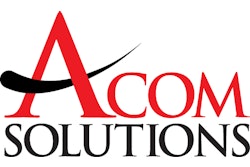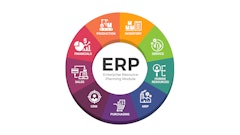IDC report reveals that spending will increase as corporate profits improve, but growth will continue to be mixed by industry
Framingham, MA — February 12, 2004 — According to a new report from IDC that details IT spending by vertical markets, technology purchases made by the manufacturing and banking industries will account for nearly one third of the $391 billion in IT spending in the United States this year. While IT spending will begin to increase as corporate profits improve, IDC said it believes growth will continue to be mixed by industry.
"We remain optimistic about the opportunities for IT vendors," said Anne Lu, senior analyst for IDC's Worldwide Vertical Markets research program. "The past several years have witnessed severely constrained IT spending as companies sought to maintain profitability by carefully managing expenditures. As the global economy improves and buyers return their focus to increasing profits through revenue growth, big-ticket IT purchases will gradually start to reappear."
Among the key findings presented in IDC's study, "U.S. IT Spending Forecast Update by Vertical Market, 2003 to 2007," are the following:
* The largest vertical market opportunities for IT spending over the next several years will continue to be in manufacturing and banking, while the strongest growth will appear in the financial services and consumer markets.
* The momentum of government IT spending will continue, fueled mainly by federal government expenditures. A major area of government investment will be in communications networks for high-priority e-government and homeland security initiatives.
* Compliance with new regulatory requirements, such as the Sarbanes-Oxley Act in accounting, HIPAA in healthcare, the USA PATRIOT Act and Basel II in banking, will continue to drive IT spending.
* Retail is moving toward just-in-time (JIT) retailing, and radio frequency identification (RFID) is expected to change the relationship among retail, manufacturing and consumers. The usage and deployment of this technology will have a big impact on retailers' mid- to long-term IT spending strategies.
* IT spending patterns in certain industries, such as manufacturing, telecommunications, retail and wholesale, are more closely tied to profits. As a result, the IT budgets in these industries are more sensitive to macroeconomic changes, such as interest and exchange rates. This differs from certain public sectors, such as government or education, which are less effected by economic turmoil.
"Vendors can succeed in this market by offering product bundling and selling solutions, which can help industries solve their business challenges," Lu added. "In addition, vendors need to create efficient vertical market strategies to tackle the different pain points of different industries."
The IDC study, "U.S. IT Spending Forecast Update by Vertical Market, 2003 to 2007" presents an updated five-year forecast for U.S. information technology spending within 17 vertical markets.
Based on the 3Q 2003 IDC Black Book, the report examines where the best IT opportunities among vertical markets will be in 2004, as well as what vertical markets will provide the best IT opportunities over the next five years.
In addition, the document offers recommendations to IT vendors on how to capitalize on vertical market opportunities.
















